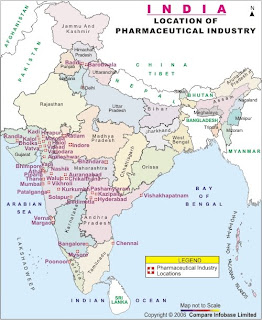Links to important international guidelines and regulatory bodies
WHO (Medicines)
WHO guidelines on medicines policy, intellectual property rights, financing & supply management, quality & safety, selection & rational use of medicines, technical co-operation and traditional medicines.
WHO sites
WHO guidelines on all areas relevant to health of people all over.
ICH
International Conference on Harmonization of Technical Requirements for the Registration of Pharmaceuticals for Human Use (ICH) guidelines defining quality, safety, efficacy & related aspects for developing and registering new medicinal products in Europe, Japan and the United States
OECD
Organization for Economic Collaboration and Development including 30 member countries covers economic and social issues in areas of health care.
EMEA
European Medicines Agency (EMEA), a decentralised body of the European Union headquartered in London, prescribes guidelines for inspections and general reporting and all aspects of human & veterinary medicines in the European Union.
US FDA
Regulations, guidelines, notifications, news and communications from US Food and Drug Administration.
TGA
Specifications regulating medicines, medical devices, blood, tissues & chemicals, issued by Therapeutic Goods Administration, the Australian regulatory body.
South Africa
The department of Health, South Africa.
WTO
News, resources, documents and publications of the World Trade Organization (WTO), the global international organization dealing with the rules of trade between nations.
Codex Alimentarius
Collection of international food standards and guidelines for processed, semi–processed and raw foods, adopted by the Codex Alimentarius Commission under the Joint FAO / WHO Food Standards Programme.
MHRA
News, warnings, information and publications of Medicines and Healthcare products Regulatory Agency (MHRA), responsible for ensuring efficacy and safety of medicines and medical devices in the UK.
Health Canada
Advisories, warnings, recalls, reports, publications, activities, legislations and guidelines from Health Canada, the Federal Department responsible for health related issues in Canada.
Thai FDA
Thai Food and Drug Administration laws and regulations with respect to drugs, food, cosmetics and narcotics.
HSA, Singapore
Health Sciences Authority (HSA), the regulatory body of Singapore.
DOH, Philippines
The Department of Health, Philippines.
Medsafe,
New Zealand
Medsafe, New Zealand Medicines and Medical Devices Safety Authority.
NPCB, Malaysia
Regulatory information, news and publications of National Pharmaceutical Control Bureau, Malaysia.
DGMP, Belgium
Guidelines and useful information to ensure safety, efficacy and quality of medicines, issued by Directorate-General Medicinal Products, Belgium.
BfArM, Germany
Licensing and registration guidelines for medicinal products laid down by Federal Institute for Drugs and Medical Devices, Germany
SwissMedic
Swiss regulatory agency for therapeutic products.
MPA, Sweden
Regulatory and surveillance guidelines issued by Medical Products Agency, Sweden.
NAFDAC, Nigeria
News, regulations and guidelines issued by The National agency for Food Administration and Control (NAFDAC), Nigeria.









